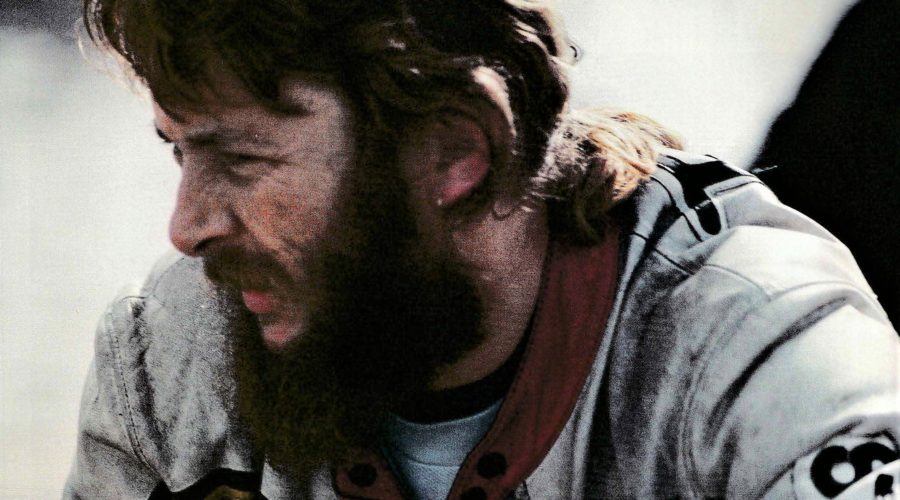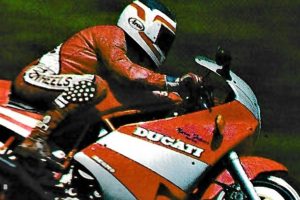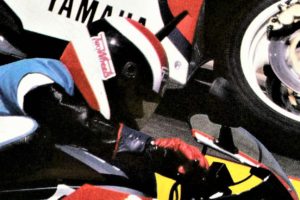Seddo: The Right Stuff
SO you want to be a road tester, huh? Piece of cake, lots of fun, any idiot could do it.
We get a lot of mail wondering how we do our road testing, who does it, what they actually do, where they go and so on. It sounds like the best job in the world, and in many ways it is, but there’s a lot more to it than simply thrashing around on someone else’s bike for a couple of weeks and then foisting your biased opinions on the assembled readership.
Over the next couple of columns we’ll try to dispel some of the myths surrounding road testing. Believe it or not, road testing is a difficult job, very timeconsuming, always challenging and sometimes dangerous. It’s also great fun. So let’s have a look first up at the credentials of a successful road tester.
Obviously, to test a bike you’ve got to be able to punt a motorbike along at a fairly quick pace. Now we’re not talking about your ability to thrash the 900SS you’ve owned for five years along your regular Sunday morning mountain road. A typical Two Wheels road test covers at least 2000 kilometres (more for tourers) over two or three weeks, so there isn’t all that much time to waste getting up to speed.
Similarly, there isn’t much point in running up and down the same old roads that you feel comfortable on and know well. In the time we have the bikes, we try to replicate as far as possible all the different conditions that potential buyers might encounter (we’ll look at this in more detail in a later column), so you’ll appreciate that it’s a matter of being competent on a broad range of bikes over all sorts of roads that is the clincher.
Equally important is the tester’s ability to interpret the actions of the bike bucking and weaving underneath. I’ve got a mate that can blow me into the weeds on just about any bike, but he’s dead-set lousy at picking faults, setting up suspension and stuff like that. “Yeah mate, handles perfectly,” he’d say, despite the fact I’d watched him get a huge wallow out of his bike only a few minutes earlier.
Even experienced testers can sometimes get caught out with a new model, particularly if the bike represents some quantum leap in handling technology or if the bike is a radical new design. The Suzuki GSX-R1100 is a case in point.
Never before have we tested a big Japanese bike with so much cornering clearance. For all intents and purposes, the damn thing just didn’t scrape during our two week test; yet six months later I was being bailed up at a cafe on the Old Pacific Highway by a GSX-R owner boasting about the scrape marks on his muffler and whinging about the poor performance of the rear shock.
Mind you, this bloke had owned the bike for over six months and he rode that particular road every Saturday and Sunday – when it was fine, anyway. He had never taken it for a ride anywhere else in all that time either. He rode that road as a racetrack, he knew every bump, hump and hole there was, and he could anticipate the actions of that bike in most forseeable situations – hardly the use a road bike would normally be subject to. As for the rear shock, he couldn’t even tell me which settings he was using…
Of course, all this ability and insight is worth three fifths of stuff all if the tester can’t translate this feedback into a readable, accurate and entertaining article. In other words, the successful tester must be able to write as well as ride.
This isn’t always as easy as it sounds, either. From time to time, ignorant people level the cliched criticism that “journalists never let the truth get in the way of a good story…”
No-one really knows how much impact magazine road tests have on the sales of a particular model, but as far as we are concerned, we take the view that you might buy a bike on the strength of our road test (particularly given the extraordinary difficulty in getting test rides from your local dealer), and so accuracy is paramount.
It probably goes without saying that the tester therefore requires a good general knowledge of motorbikes of all types and their component parts. It doesn’t require a degree in automotive engineering (though it’d be useful…), but a solid technical understanding of engines, chassis, suspension and tyres is a must. An eye for detail and an inquisitive and objective mind is also an absolute necessity.
Perhaps the thread that binds all these traits into a consistent and workable whole is pure enthusiasm for all things motorcycling. The good motorcycle testers in Australia (and there are a few) are all lifestyle motorcyclists who live, eat and breathe bikes virtually every waking hour. All the good ones have at least fifteen years of riding experience under their belts, and are just itching to get on with the next fifteen.
So there you go. Do you still want to be a road tester? Next time, I’ll look at how we get the bikes we test, where we take them, and how we decide who tests what as well as taking a look at some of our experiences that didn’t make it to print.
Hopefully, this will mean that all the tirades of abuse we cop about road testing will at least be informed tirades of abuse, and we can continue to improve our road tests along the lines you want.
After all, we only do it for you…
By Geoff Seddon. Two Wheels, April 1989




